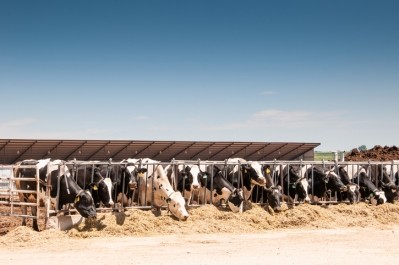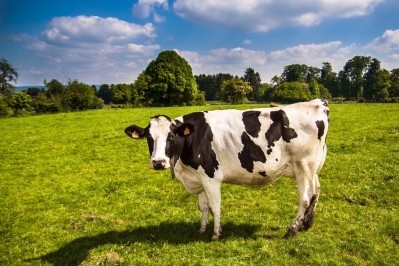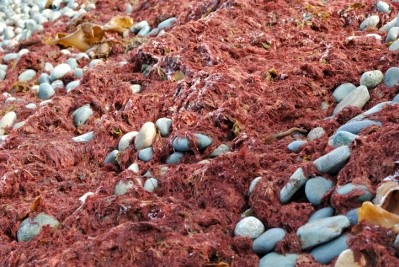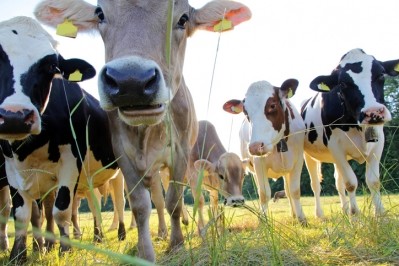Cutting methane emissions in cattle
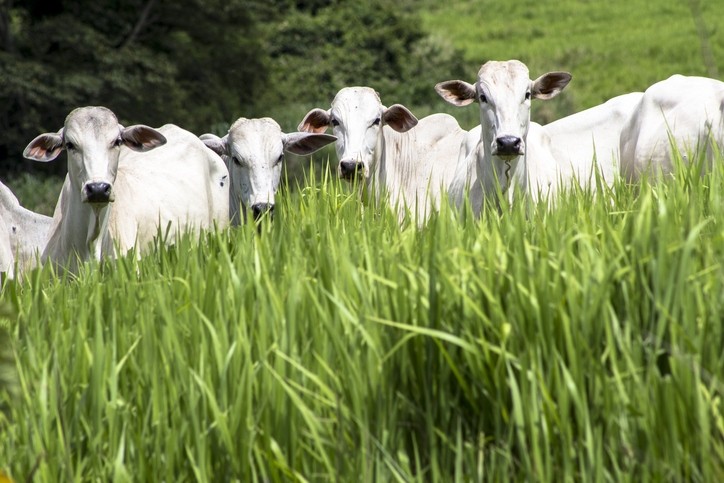
Researchers from Mexico and Colombia examined the influence on methane production of including tannins and saponins in the diets of heifers.
The study was published in Animal Feed Science and Technology.
“The objective of this research was to evaluate the effect of increasing levels of pods of Enterolobium cyclocarpum mixed with foliage of Gliricidia sepium in a ration based on tropical grass on emissions of enteric methane, rumen fermentation, and microbial population of crossbred heifers,” the researchers said.
The researchers found that adding an increasing amount of legume foliage and pods generated a linear response in the molar proportions of butyric acid and the acetic to propionic acid ratio. However, the trial feeds did not alter the rumen population of total bacteria, methanogenic archaea or total protozoa.
“Substitution of 15 and 30% of pods of E. cyclocarpum mixed with foliage of G. sepium in the ration, decreases annual methane emissions per unit product, without affecting dry matter intake or rumen microbial population, on the contrary, digestible CP intake and animal productivity increased due to supply of CP, CT [condensed tannins] and saponins,” they added.
Cows and greenhouse gas emissions
Agriculture can have an influence on the environment and is considered to add between 20 to 35% of total greenhouse gas emissions, the researchers said. Raising livestock also can generate greenhouse gases like nitrous oxide and methane.
Methane “has a warming potential 28 times higher than carbon dioxide and an increase of 86% has been predicted to occur over the next 20 years,” they added.
However, the generation of methane during ruminal fermentation of carbohydrates also is an inefficiency in terms of energy use at the “whole-animal level,” they said. That inefficiency has a negative effect on production costs.
“It is important to identify methods and strategies to find a balance between minimizing environmental impacts and intensifying animal productivity to meet requirements of animal protein by the world population in the years to come,” the researchers said.
Why feed tannins and saponins?
Adding legume foliage and pods to feed rations is a potential way to lower greenhouse gas emissions for producers in the tropics, the researchers said.
The species of forage plants often used in feeding systems tend to include condensed tannins and saponins, which alter the fermentation process and change the numbers of rumen microbes include archaea, protozoa and fibrolytic bacteria, they said. The alteration may inhibit fiber digestibility but improve the availability of protein and energy.
“The inclusion of local forage resources such as foliage of Gliricidia sepium and pods of Enterolobium cyclocarpum to a basal ration of grass is a viable means to provide protein and secondary compounds (e.g., CT and triterpenic saponins; Rastrelli et al., 1999; Delgado et al., 2012) in practical ruminant rations,” they said. “Hence, some other reports indicate an additional effect in the reduction of net methane emissions when G. sepium and E. cyclocarpum are independently included in the diets.”
When the feed ingredients are used separately, emission reduction of 5 to 10% have been calculated compared to diets that did not include the ingredient, the researchers said.
Feeding trial details
In the feeding trial, four cows were fed one of four diets for a 16-day period followed by a 10-day cleanse before being changed to a new experiment diet, the researchers said. The cleaning period diet included “79.9% Brachiaria brizantha hay and 20.1% of balanced mix based on soybean meal, wheat bran, cane molasses and minerals.”
The four diets used during the feeding trials included varying levels of foliage and pods a 0, 15, 30 and 45% on a dry matter (DM) basis, they said. “Basal ration was Brachiaria brizantha (Hochst. ex A. Rich.) Stapf. hay (90 days regrowth) supplemented with soybean meal, wheat bran, cane molasses, and 65 g/day of a commercial mineral mixture,” they added.
Enterolobium cyclocarpum pods and Gliricidia sepium foliage were dried and ground prior to being added to the diet, they said.
Following a 13-day adaption period, methane (CH4) measurements were taken and ruminal fluid samples were collected, the researchers said. Feed intake was established daily, fecal and feed samples were gathered daily and cows were weighed at the start and end of each feeding period.
Additionally, three rumen cannulated cows were used to establish the in-situ degradation of feed ingredients, they said. Five gramps of forage, pods and grains were immersed in ruminal fluid for 3, 6, 12, 24, 36 and 48 hours – for soybean meal; 72 hours – for G. sepium, E. cyclocarpum, and wheat bran; and 96 h for B. brizantha hay.
Results
Feed intake and average daily gain were similar for all of the diets, the researchers said. However, the amount of crude protein, tannins and saponins grew linearly as more of the trial ingredients were added and the amount of grass was reduced.
When the legume leaves and pods were included in the diet the apparent digestibility of NDF and ADF dropped, but the apparent digestibility of CP increased for some trial diets, they said. The intake of digestible dry matter, organic matter, neutral detergent fiber and average detergent fiber were similar for all diets, while the digestible CP intake expanded as more of the trial ingredients were added.
“In situ incubation of all ration ingredients showed that the rapidly degradable fraction from DM in the rumen was highest for the pods (623.3 g/kg DM), while Brachiaria brizantha and soybean meal showed the highest values for the slowly degradable fraction (458.0 and 449.1 g/kg DM, respectively,” they added.
The trial feed ingredients did not alter rumen pH and amounts of archaea and protozoa were similar, but a linear response was noted for butyric acid when the ingredients were included, the researchers said. The ratio of acetic to propionic acids in the rumen dropped linearly.
The average enteric CH4 emission tended to fall linearly as more of the trial ingredients were used in the ration, they said.
“There was an effect of the supplementation with legume foliage mixed with pods on methane production, expressed as CH4 g/kg of DCP, this decreased an average of 0.16 times (413 vs. 347 g CH4/kg DCP) when rations were supplemented with G. sepium mixed E. cyclocarpum, compared to unsupplemented treatment,” the researchers said. “Addition of 15 and 30% of G. sepium and E. cyclocarpum to the grass ration showed a reduction of methane emissions of 0.10 kg CH4/kg WG/year, compared to treatments containing 0 and 45%.”
“Studies on the long-term effects of feeding those legumes to cattle and nitrogen balance are warranted as well as the study of supplying those plants at different physiological stages in cattle,” they added.
Source: Animal Feed Science and Technology
Published online ahead of print: doi.org/10.1016/j.anifeedsci.2019.01.011
Title: Effects of tannins and saponins contained in foliage of Gliricidia sepium and pods of Enterolobium cyclocarpum on fermentation, methane emissions and rumen microbial population in crossbred heifers
Authors: I. Molina-Botero, J. Arroyave-Jaramillo, S. Valencia-Salazar, R. Barahona-Rosales, C. Aguilar-Pérez, A. Burgos, J. Arango, J. Ku-Vera
